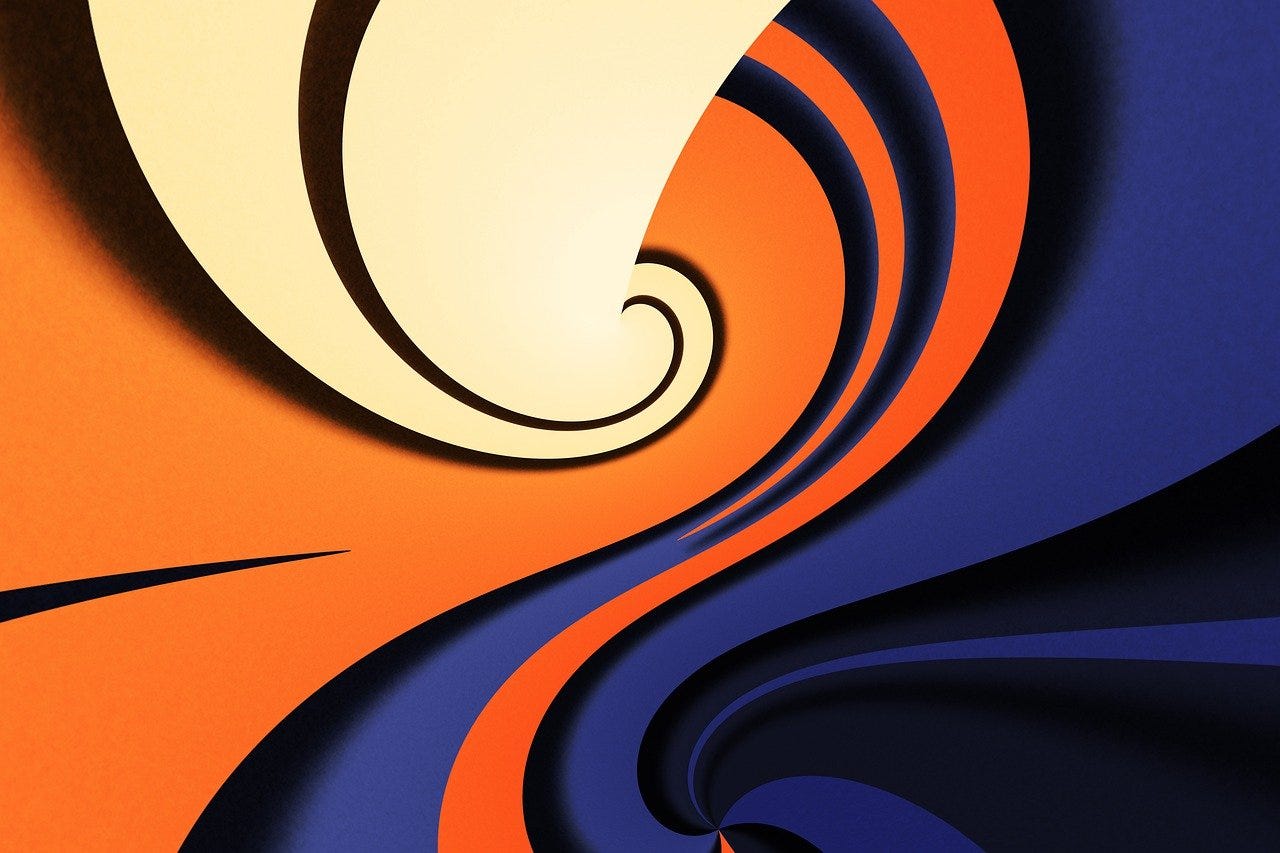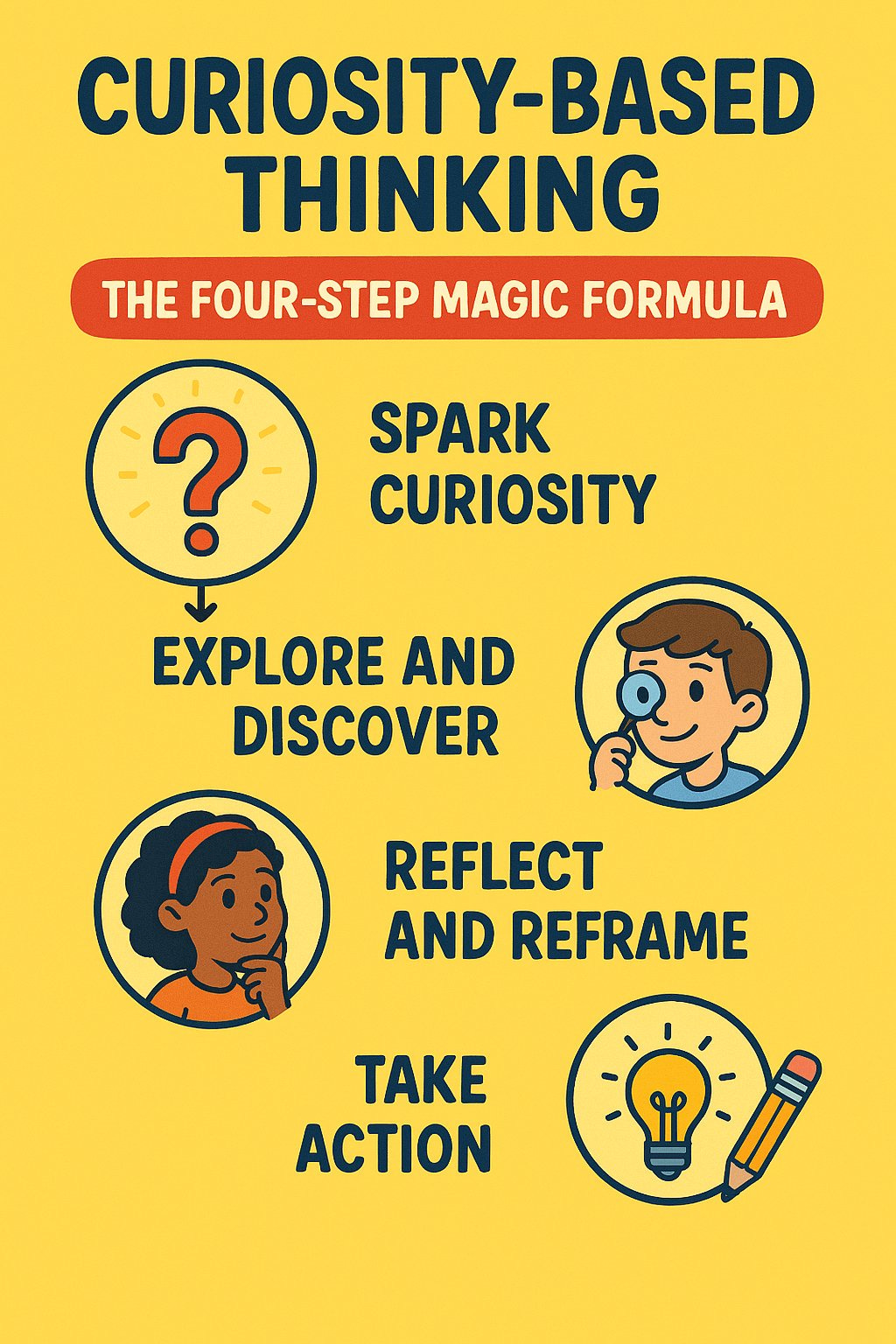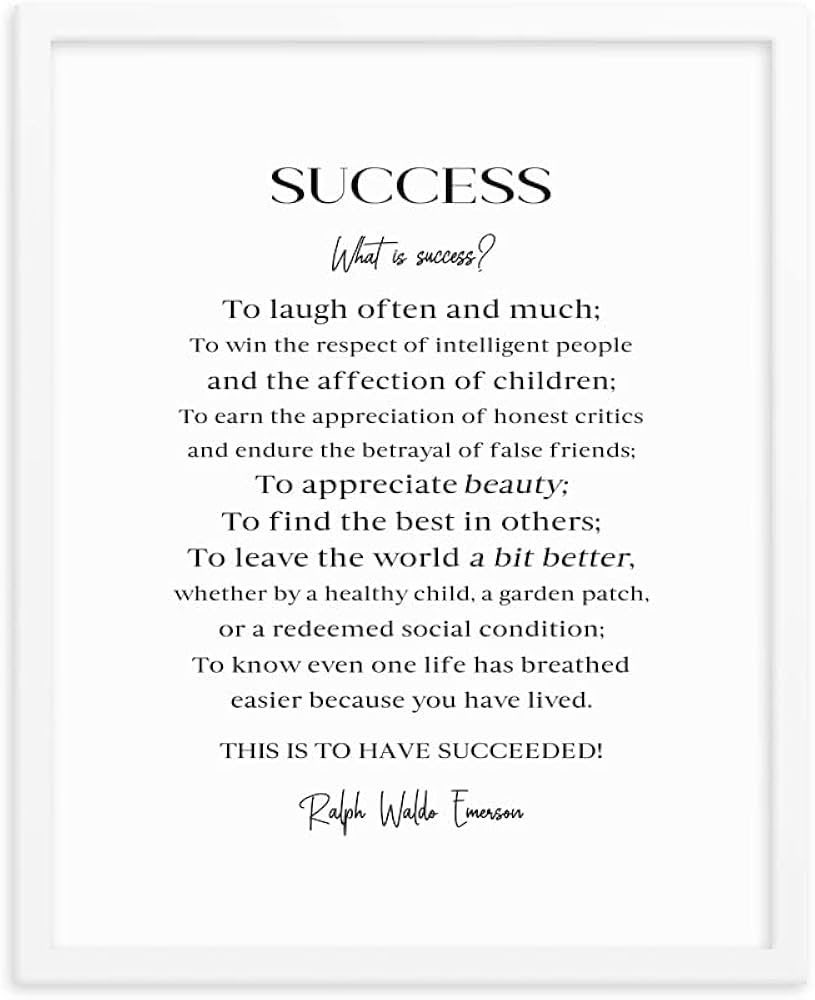Curiosity: The Ultimate Classroom Revolution
How to Transform Students into Success-Seekers Through the Power of Wonder
You're mid-lesson when a student blurts out, "What if we could talk to animals?" Suddenly, your classroom erupts—students debating whale songs, imagining chatty squirrels, and wondering if dogs would spill our secrets. The bell rings, and they're still buzzing with ideas, begging for more time.
That spark? That's curiosity doing what it does best—turning an ordinary moment into classroom magic.
When AI and technology have rendered traditional teaching approaches obsolete, curiosity isn't just nice to have—it's our educational superpower. We're no longer in the business of fact-cramming; we're in the business of wonder-sparking.
And here's the beautiful truth: curiosity can help your students achieve what Ralph Waldo Emerson saw as true success—laughing often, appreciating beauty, finding the best in others, and leaving the world better than they found it.
What if you could harness your students' natural nosiness and transform it into their greatest strength? Enter Curiosity-Based Thinking—a refreshingly simple approach that turns "I wonder" moments into meaningful learning adventures. It's like handing your students a treasure map where X marks the spot for genuine, lasting success.
Let's explore how you can make curiosity the star of your classroom—and have an absolute blast along the way.
Curiosity-Based Thinking: The Four-Step Magic Formula
Think of Curiosity-Based Thinking as a playful four-step journey that takes students from head-scratching to mind-blowing:
Spark Curiosity: Launch with an intriguing question or "what if" scenario that makes brains tingle.
Explore and Discover: Let students investigate through research, conversation, or hands-on experimentation.
Reflect and Reframe: Guide them to connect discoveries to their lives and reshape their thinking.
Take Action: Invite them to create something—anything—that showcases their new understanding.
It's like turning your classroom into a curiosity playground where every student is part detective, part artist, and part inventor.
And this isn't just feel-good fluff—science backs it up. A study from the University of California, Davis found that curiosity puts our brains in a state that allows us to absorb not just what we're curious about, but incidental information too. In essence, curious students learn more and remember it longer.
Emerson's Success Through the Lens of Curiosity
Ralph Waldo Emerson defined success beautifully: to laugh often, earn respect, appreciate beauty, find the best in others, and know that one life has breathed easier because you lived.
Curiosity is the engine that drives this kind of success. When students embrace curiosity, they:
Laugh more while chasing down wild ideas and making discoveries.
Build authentic respect by sharing perspectives and listening deeply.
Develop an eye for beauty in both the ordinary and extraordinary.
Discover the best in others through collaborative exploration.
Make meaningful impacts by transforming curiosity into action.
As their teacher, you're not just delivering content—you're igniting a lifelong passion for discovery that leads to Emerson's version of success.
Three Curiosity-Powered Adventures for Your Classroom
Ready to witness curiosity in action? Here are three ready-to-roll activities that bring Emerson's vision of success to life without adding to your workload.
1. The Joy of Laughter Lab
Kick-Off Question: "What makes people laugh, and why does it matter?"
How It Unfolds:Students investigate different types of humor—watching clips, reading jokes, or interviewing friends about what cracks them up. They reflect on patterns they notice: What makes something universally funny? How does humor differ across ages or cultures?
For the finale, they create original jokes, skits, or funny stories to share with the class.
Why It's Gold: Students not only laugh (hello, Emerson's first success marker!) but also develop communication skills, cultural awareness, and confidence. Plus, research shows laughter reduces stress hormones and boosts learning capacity.
2. Beauty Hunters
Kick-Off Question: "Where is beauty hiding in our everyday world?"
How It Unfolds: Send students on a beauty scavenger hunt—in nature, around school, or even in digital spaces. They document their finds with photos, sketches, or words.
Back together, they discuss what drew them to their discoveries and how "beauty" might be broader than they initially thought.
They transform their insights into art, poetry, or stories that celebrate previously overlooked beauty.
Why It's Gold: This activity hones observation skills, promotes mindfulness, and directly addresses Emerson's call to "appreciate beauty." Studies suggest that noticing beauty improves well-being and cognitive function.
3. Mini World-Changers Project
Kick-Off Question: "How might we make our little corner of the world better?"
How It Unfolds:Students identify something they'd like to improve—from school lunchroom waste to community kindness levels.
They research the issue, interview stakeholders, and explore possible solutions.
After reflecting on what's feasible and impactful, they design and implement a mini-project.
They share outcomes and lessons learned, celebrating both successes and instructive failures.
Why It's Gold: This directly connects to Emerson's belief that success means leaving the world better. Students develop agency, problem-solving skills, and the understanding that their ideas matter—all while making positive change happen.
Unleashing Curiosity Without Extra Work
The beauty of Curiosity-Based Thinking isn't that it adds another task to your plate—it transforms what you're already doing. Sprinkle these approaches into your regular lessons:
Drop curiosity bombs: Start class with a thought-provoking question related to your content.
Embrace the tangents: When students ask unexpected questions, follow the thread occasionally—these detours often lead to the richest learning.
Model curiosity: Share your own wonderings and let students see you getting excited about new discoveries.
Celebrate questions over answers: Acknowledge great questions as much as correct responses.
Remember, curiosity spreads like wildfire. Light the spark, and watch it catch.
Your Classroom Revolution Starts with One Question
Imagine a classroom where curiosity isn't just allowed but celebrated—where students arrive energized, where learning feels like adventure, and where success is measured not by test scores but by laughter, respect, beauty-finding, and world-changing.
This isn't a fantasy; it starts with you asking one good question.
Begin small—try just one of these activities and see where it takes you. Watch closely as your students light up with possibility. Notice how the energy in your classroom shifts. Feel your own teaching spark reignite as you move from content-deliverer to curiosity-catalyst.
By embracing Curiosity-Based Thinking, you're not just preparing students for tests; you're preparing them for life in a rapidly changing world where creativity, critical thinking, and adaptability reign supreme.
You're showing them that true success—Emerson's success—comes not from knowing all the answers but from asking better questions.
So go ahead—get curious. Your students are waiting to follow your lead, and the classroom revolution is just one "what if" away.
Curiosity isn't just contagious; it's revolutionary. Pass it on!
Stay curious!
Matt





